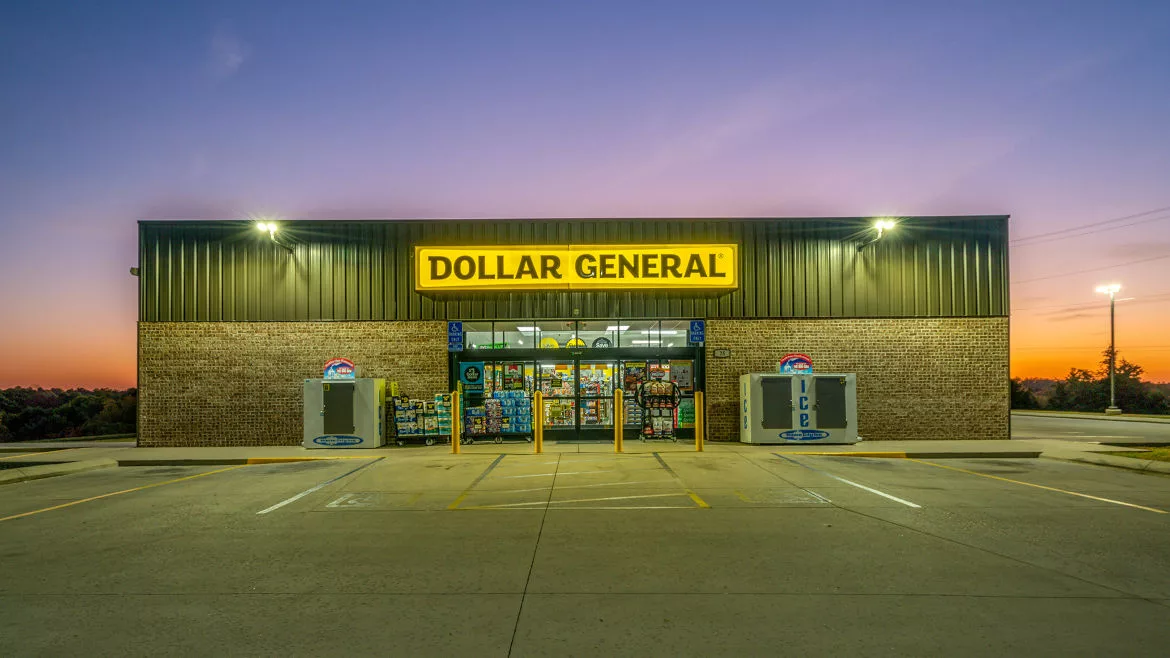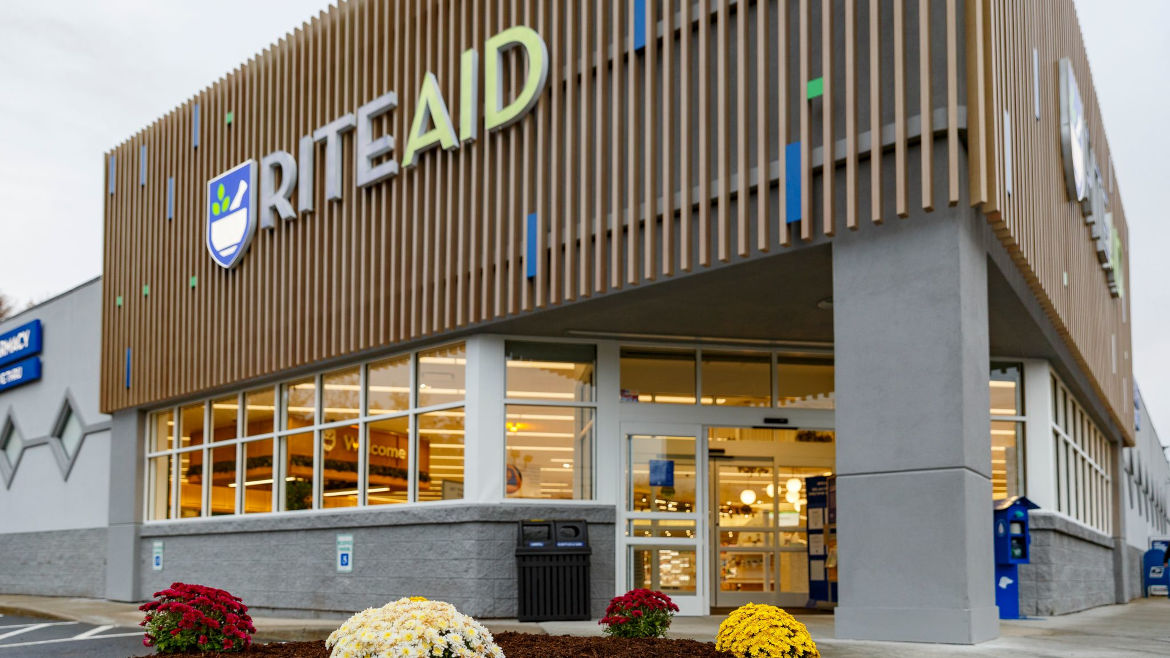Channel Strategies
Price, growing assortment drives interest in drug, dollar stores
Convenience fuels drug channel interest, while low prices entice dollar channel interest

Image courtesy of Dollar General
In the 2012 hit “Thrift Shop,” hip-hop duo Macklemore and Ryan Lewis share how awesome it is to shop secondhand. The comedic song highlights the benefits of thrifting and saving money instead of flaunting wealth.
Although there is not a hit song about it, many consumers have turned to the drug and dollar channels to save money and for their convenience, but these channels still face challenges.
Kyle Wilcoxen, principal of retail client solutions at Chicago-based Circana, says that inflation still is impacting the shopping patterns of consumers. Although the actual inflation rate has “steadily come down” from its June 2022 high, with December 2023 coming in at 3.4%, he notes that 95% of all households surveyed by Circana are concerned about food cost inflation.
“Thirty-eight percent of low income households expect their financial situation to be worse a year from now,” Wilcoxen states. “Eighty-four percent of those surveyed said they would be making changes in their shopping habits, such as looking for sales and cutting back on non-essentials.”
This influences both drug and dollar store channels.
“Drug channel customers with income less than $50,000 annually are the largest portion of the drug channel, and with the inflation increases in recent years, these customers are spending more on core necessities, like food, housing, gas and healthcare,” Wilcoxen explains. “This inflation puts pressure on their finances and pushes them to stretch their dollars through lower price points or better value beyond the drug channel.”
Ryan Plumley, consultant of retail client solutions at Circana, shares how inflation has affected the dollar channel.
“The dollar channel is outpacing the total market in revenue, up 2.5% in Q4 2023 versus year ago (YA), while the total market is flat versus year ago,” he says. “More households are shopping at the dollar channel compared to Q4 2022, and the channel is seeing an increase in trips overall, as well as the number of trips each shopper is making to the channel.”
Plumley shares that beverage is one of the departments leading the way in the dollar channel, while liquor is a drag. Additionally, the dollar channel is outpacing multi-outlets across all metrics, he notes. The channel saw an increase in buyers, trips and trips per buyer, while price per basket remained unchanged, he says.
Brigette Thomas, senior analyst at IBISWorld, New York, also notes how inflation has influenced these channels. She says it mainly has impacted what shoppers are looking for and who is shopping at dollar and variety stores.
“Consumer demand for food and grocery items at these stores has increased the most significantly because of inflation,” Thomas suggests. “Rising food prices at traditional grocery stores and supermarkets have led more consumers to do their shopping at dollar stores because of their low, stable pricing.”
She continues to add that inflation has accelerated the trend of higher-income consumers shopping at dollar stores.
“Consumers earning over $100,000 a year are a fast-growing market for dollar and variety stores,” Thomas states. “This trend highlights that consumers in all income demographics are increasingly seeking out the best deal. Dollar stores have also focused on expanding their product offerings and redesigning stores to be more aesthetically pleasing, which also contributed to the rise of high-income consumers.”
Rolling with the trends
Aside from inflation, experts highlight how other consumer trends are affecting drug and dollar store channels.
IBISWorld’s Thomas says a major trend in both channels is the expanding of product selections.
“Stores have started to include higher-priced items in their merchandise, shifting from the traditional lower-priced good,” she explains. “This broadened product range includes electronics and premium and branded items, which has increased appeal of dollar stores among higher-end consumers.”
Thomas notes that the continued rise of health consciousness among consumers has contributed to that product expansion as well.
“Dollar stores are increasingly stocking more fresh or healthier food options,” she says. “This includes organic produce, fresh vegetables and fruits, and healthier snack alternatives.”
Circana’s Wilcoxen also feels that the smaller store format and go-to-market strategy of the drug and dollar channel has impacted assortment decisions by these retailers.
“[The] drug channel is focused on acute needs and convenience, while [the] dollar channel is focused on low price points of everyday essentials,” he explains. “These to-go-market approaches and small store size drive tough assortment decisions on what products their customers are looking for at these retailers. Therefore, both channels tend to focus on smaller pack sizes and must skip larger, value-driven package sizes.”
As for which beverage categories are thriving in these channels, Wilcoxen says sports drinks are growing at 12% versus last year and outpacing the market in the drug store channel. However, drug stores are lagging in the market in key beverage categories, such as carbonated beverages, bottled water and energy drinks, he notes.
“From an adult beverage perspective, premixed cocktails is the fastest growing drug category and is keeping pace with the market at 20% growth versus last year,” Wilcoxen shares. “However, drug is lagging the market in beer/alcoholic cider, spirits/liquor and wine categories.”
He notes that the drug channel lagged in total U.S. multi outlet in Q4, as revenue declined 5.5% compared with a year ago. That decline is due to a decrease in household penetration, as total drug channel customers declined 6%, Wilcoxen says.
Circana’s Plumley states that the dollar channel saw double digit growth in the fourth quarter compared with the same period in 2022 across these categories: energy drinks, instant tea mixes, canned juices, drink mixes, bottled juices and ready-to-drink (RTD) tea and coffee.
“All of these categories are outpacing the total market in revenue trends versus a year ago,” he says.
IBISWorld’s Thomas notes that well-known beverage brands have performed well at dollar stores.
“This is primarily because dollar stores sell these products for less than traditional grocery stores and other retailers,” she says. “Consumers are drawn to brands they recognize or have loyalty to and are especially drawn to lower pricing when they don’t feel they are compromising on quality.”
Circana’s Plumley goes on to describe how digital trends, from mobile apps to eCommerce, are impacting the dollar channel.
“There is a big opportunity for the dollar channel when it comes to eCommerce and things like mobile apps and loyalty programs,” he says. “The channel lags behind competing channels like grocery, mass and club when it comes to revenue and year-over-year trends. It could be a challenge to realize the potential for eCommerce here, as it relates to the core shopper in the dollar channel who skews older and lower income.”
In comparison, Circana’s Wilcoxen notes that the drug store channel has “invested heavily” in digital trends, like their mobile apps and their buy online and pickup in-store options. Yet, the challenge for the drug store channel has been the adoption of such digital trends, as their core customer also skews older, he says.
IBISWorld’s Thomas says that, as with most retail industries, eCommerce has significantly affected the way stores operate. Consumers are increasingly valuing convenience, she adds, which has caused a shift in preference from online shopping to shopping at traditional brick-and-mortar stores.
“With intense competition coming from online retail giants like Amazon, dollar and variety stores have had to strengthen their online presence to maintain customers,” Thomas states. “This includes having user-friendly websites and mobile apps. Another way dollar stores have adapted to digital trends is by partnering with delivery services like Instacart.”
She adds that these partnerships have allowed dollar stores to reach a larger potential customer base and are a way to offer same day delivery.

Image courtesy of Rite Aid
Other obstacles
Beyond inflation and consumer trends, drug and dollar store channels also are facing other challenges.
“The drug channel is facing strong headwinds after nearly two years of elevated foot traffic due to the COVID-19 pandemic,” Circana’s Wilcoxen says. “More people visited drug stores as they sought vaccines, at-home testing and other healthcare products.”
Overall, customers and transactions are down at the drug store channel, forcing retailers to rethink their go-to-market strategies to expand their role in everyday healthcare, Wilcoxen explains. He points to the examples of CVS’s acquisition of Aetna and the launch of Walgreens Health to offer personalized healthcare to local communities.
“Additional pressure on drug channel retailers is settlements and ongoing lawsuits regarding the opioid crisis in the U.S., specifically one of the lead causes for Rite Aid to seek Chapter 11 bankruptcy to restructure and reduce the company’s debt,” Wilcoxen says. “CVS, Walgreens and Rite Aid are also consolidating locations across the U.S. after decades of expansion by closing more than 1,000 stores.”
As for the dollar store channel, Circana’s Plumley says that shoppers are interested in seeing expanded offerings, especially in frozen food and fresh departments, as well as more national brands.
“How the channel reacts will contribute to shopper retention and loyalty down the road,” he offers. “There is also a challenge in small basket size compared to other channels. The typical spend for a trip to the dollar channel is around $19, while the total market is up around $55.”
Plumley shares that consumer perception surrounding dollar stores’ cleanliness and in-store organization is another challenge that must be addressed in order for new shoppers to continue frequenting the channel.
IBISWorld’s Thomas says that dollar stores are experiencing rising competition from other retailers offering similar products at competitive pricing, especially Target, Walmart and Amazon.
“These retailers offer an expansive range of products that overlap with dollar store products, along with higher-priced items that dollar stores don’t stock,” she illustrates. “Consumers who are looking for a one-stop shopping experience are often more inclined to shop at these larger retailers, where they can get all their shopping done at once.”
Thomas also notes that supply chain issues represent a threat to dollar stores, because a large portion of dollar store products are sourced from overseas. Disruptions in the global supply chain are having a negative effect on the industry, she says.
“Inventory issues and rising purchase costs are the main challenges caused by supply chain disruptions,” she adds.
Although it might seem bleak, the drug and dollar store channels must rise to the challenge to retain consumer engagement.
Looking for a reprint of this article?
From high-res PDFs to custom plaques, order your copy today!




-1170x658.webp?height=200&t=1742915877&width=200)

